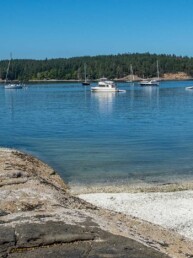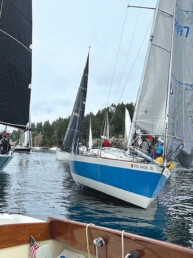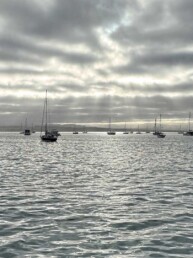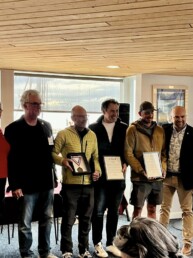Immersing our family in the realities of the natural world is a meaningful part of our cruising dream
When we set off from the Pacific Northwest aboard Totem over a decade ago, we anticipated the rewards of living with a lighter footprint and helping our children internalize the wonder that is our planet.
While Jacques Cousteau is credited with saying that “people protect what they love”, I’m familiar with the longer form of this from a Senegalese poet and naturalist, Baba Dioum:
“In the end, we will conserve only what we love. We will love only what we understand. We will understand only what we are taught.”
As we hope to teach our children about the world we live on and the people who inhabit it, we also hope to instill value and advocacy.
While I remain grateful for this, looking back it smacks of the privilege we have to safely observe and process and consider: how will we use this opportunity? One way is to bear witness. And so, here, we bear witness to a range of environmental tragedies we experienced around the world.
Borneo – illegal mining tainting the river in a national park
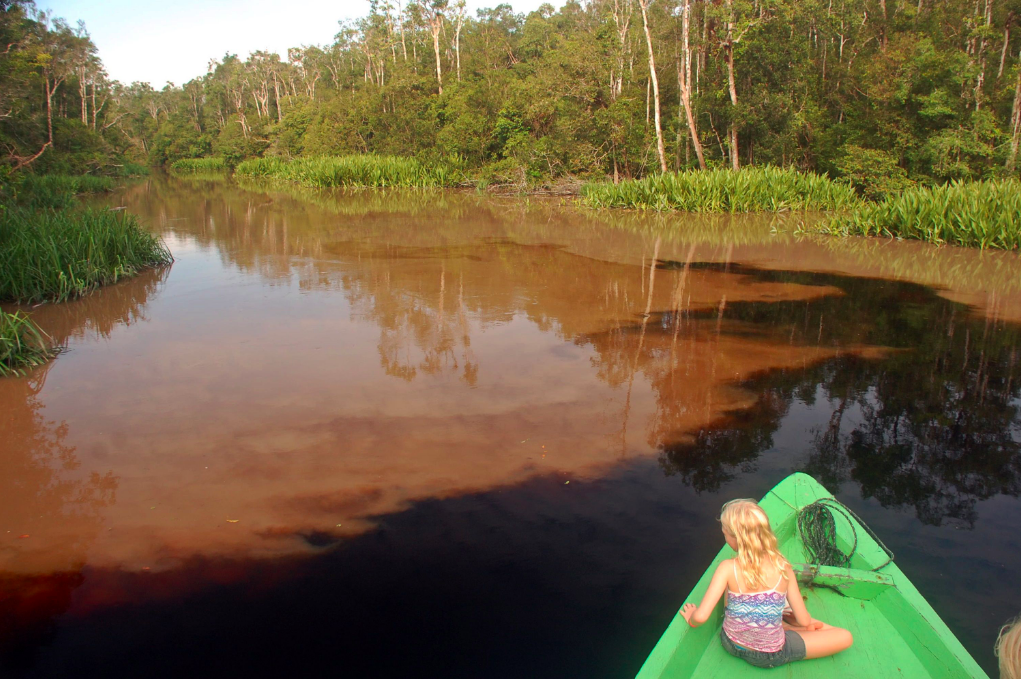
We traveled up the Kumai River in Kalimantan Barat, the western province of Indonesian Borneo. We expected this stop to be a highlight of our six months in Indonesia as we would have an opportunity to see orangutans in the wild, in one of their last natural habitats. But the indelible impression was more of the environmental costs than it was of the apes. The national parklands where the rare animals were meant to live had been appropriated for palm oil plantations, their vibrant green sometimes visible behind the fringe of tropical forest. On our way to the orangutan’s preserve, we navigated through runoff from an illegal gold mine that tainted the river where residents fished to feed their families.
Sydney – kids and a haul
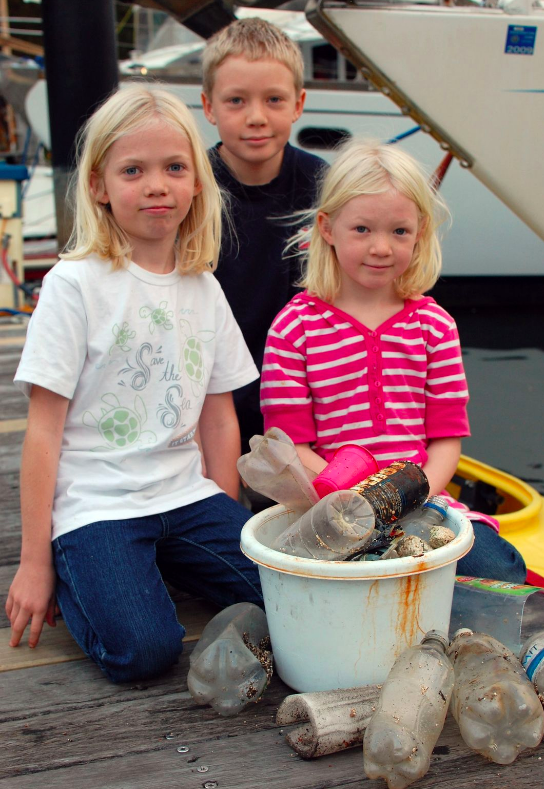
In Australia, everyone knows the phrase “Clean Up Australia” after the event (and subsequent culture) initiated and promoted by Australian solo sailor, Ian Kiernan. Seeing plastic trash litter the shores of pristine islands, thousands of miles from anywhere, left an impression on Kiernan — and on our kids, who embarked on a mission to collect and dispose of the garbage that floated around the marina where we lived in 2011. Despite cultural orientation toward sustainability and waste management, the consumer driven population produces (as we do) an astonishing amount of trash. Enough of it ends up in our waterways that, after rainfalls wash it through the sewer system, downstream berths are so cogged it is literally impossible to see the water.
Chagos – fluorescing coral, Siobhan swims over a bleaching reef
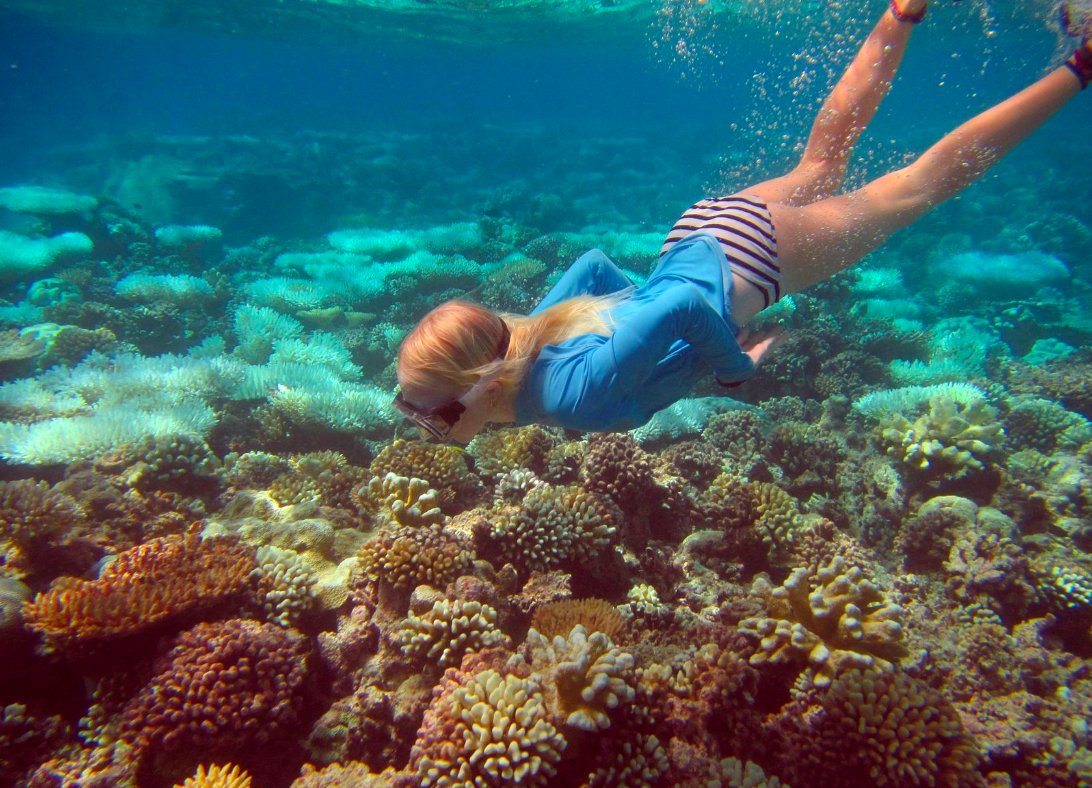
The British archipelago of Chagos sits nearly smack in the middle of the expansive Indian Ocean. Meaningful populations don’t exist for wide stretches of ocean, and yet the coral here was stressed by the man-made impact of climate change. Underwater, these equatorial islands held striking corals in fluorescent colors. Beautiful? To some eyes, but those fluorescent colors presented instead of ‘normal’ coloration because the coral is bleaching in response to stress from unusually high water temperatures. If the conditions don’t improve, the coral dies. Our inexpert estimate of coral in Chagos was that around 90% of the coral is bleached or bleaching during our 2015 stay.
Comoros – garbage mountain next to the anchorage
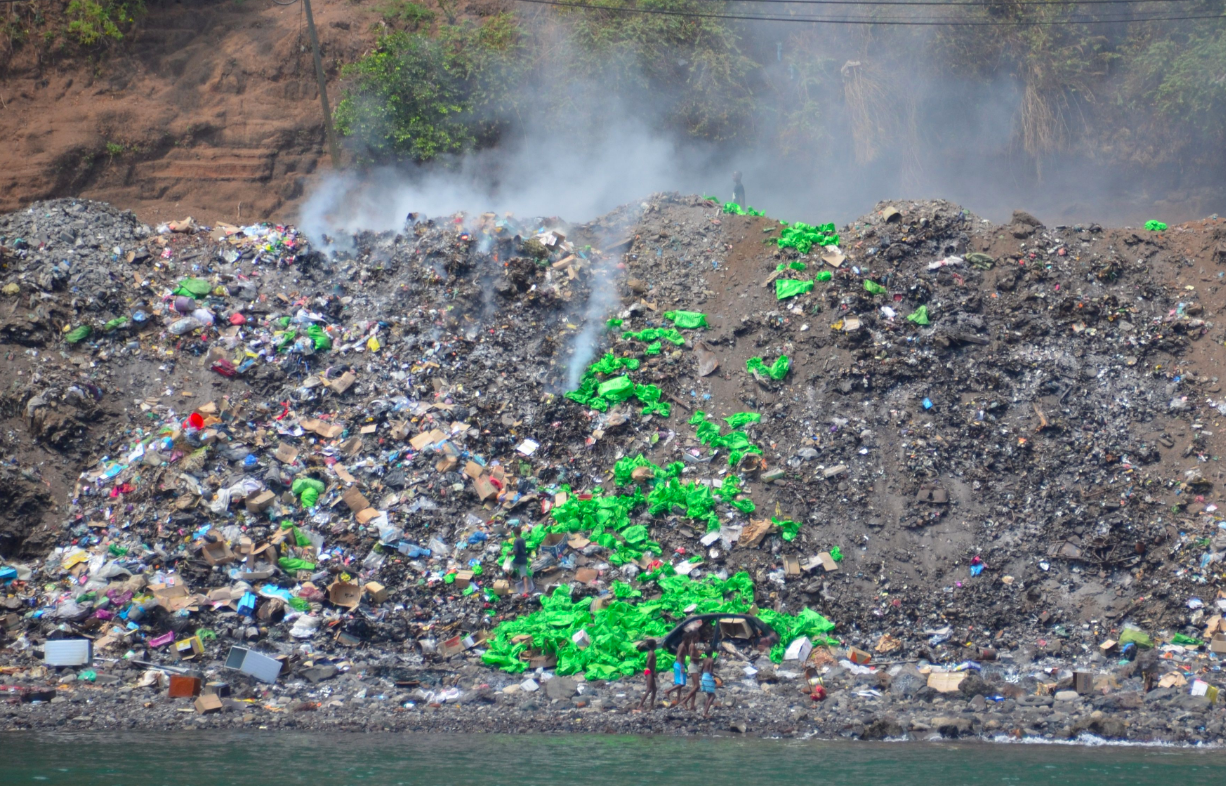
Garbage disposal is a problem in much of the world that cruisers commonly visit. In Comoros, a literal mountain of garbage lined the beach next to the anchorage in Anjouan. Cars backed up to dump loads; it appeared to substitute for a public facility, and burned 24/7. When winds shifted to blow it towards Totem, the stench of burning plastic made breathing difficult. When surviving from day-to-day is your priority, working out a healthier waste management system is harder to prioritize.
Indonesia – daily tidal garbage
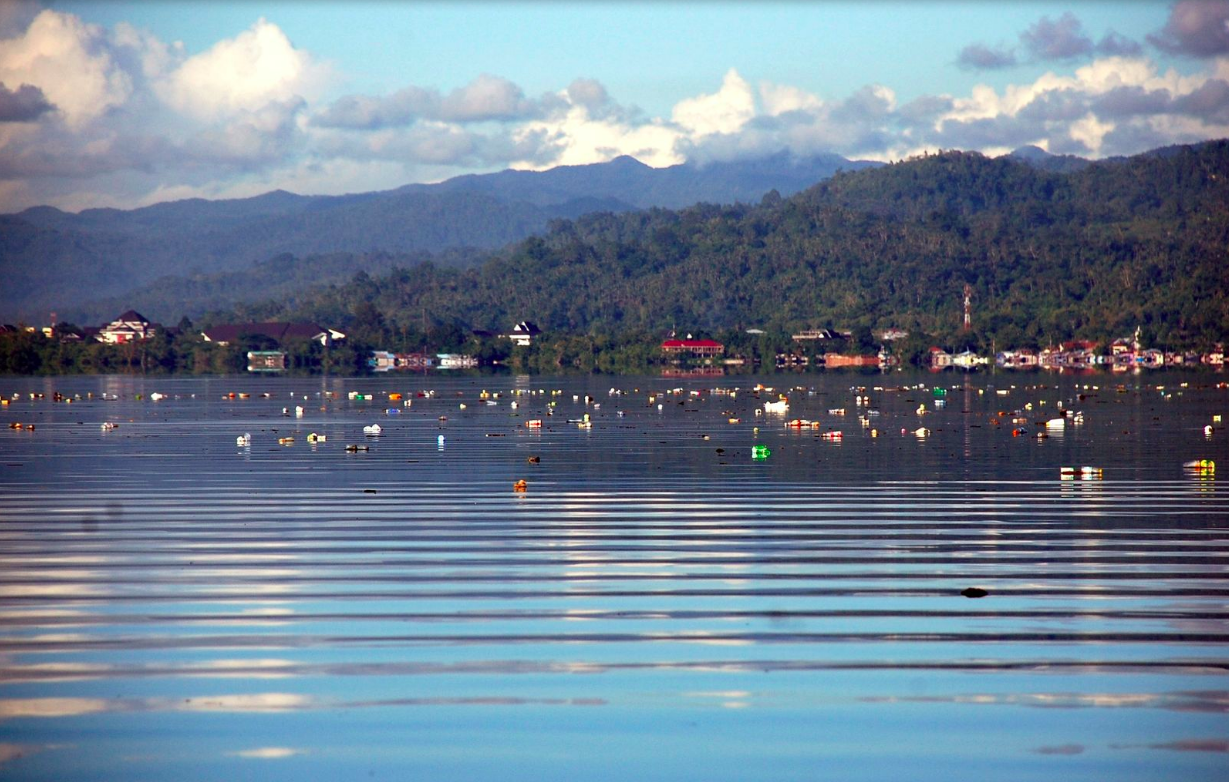
Most of the islands we visited in Indonesia don’t have waste management, but Ambon was an exception. Not only was there a recycling facility in development, but the entire community had public days for picking up garbage! Children in brightly colored school uniforms were out collecting garbage to be properly sorted and disposed of. And then, the tide would run through a cycle, and once again the bay would fill with floating plastic. Despite the public effort, the public will lags and there remained no stigma against throwing wrappers on the ground where you stood.
Indian Ocean – the thinking chair
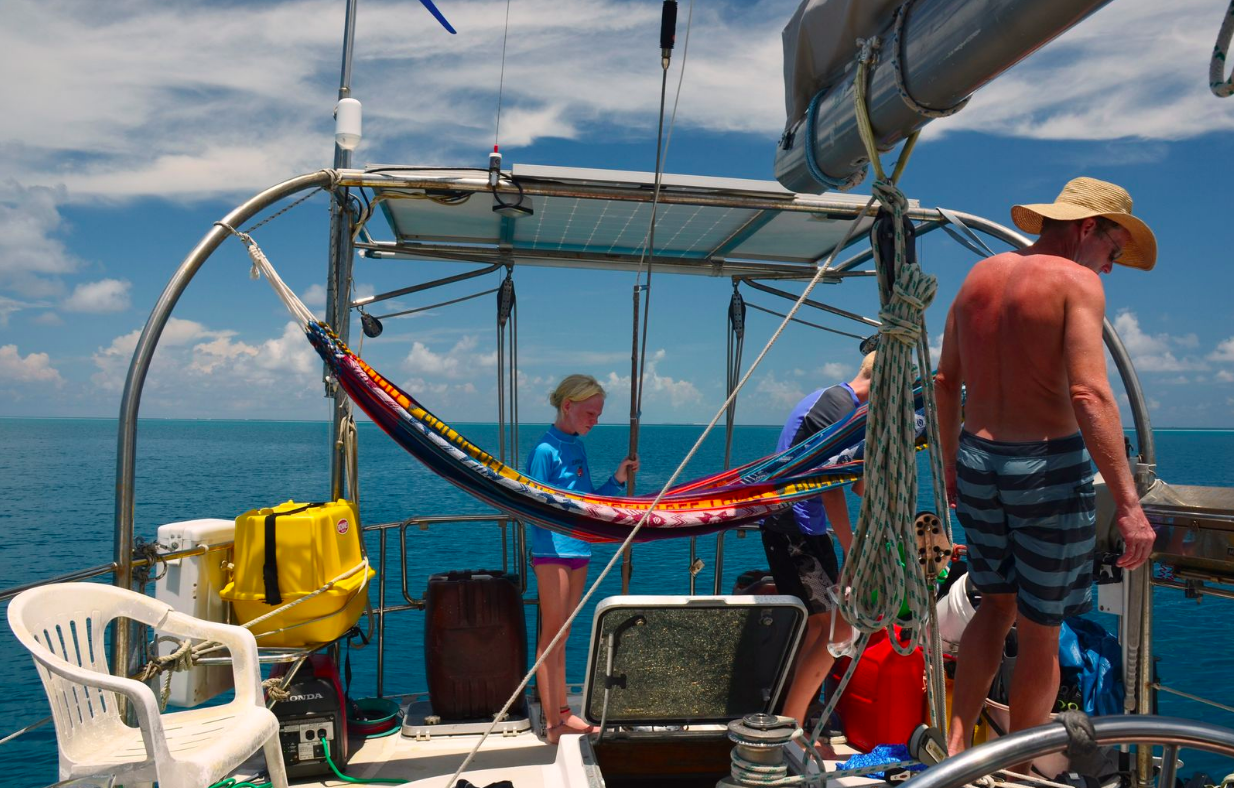
When it’s possible, we pick up garbage and carry it to be disposed. It’s rarely practical, though, because the facilities simply don’t exist. But occasionally it adds a colorful slice to life aboard. While sailing through atolls in the Maldivian chain, we saw a larger object floating; it proved to be a plastic chair. This chair subsequently attended numerous beach potlucks, and was a suitable aft-deck “thinking chair” before being re-homed to an island where it was put in use.
Sri Lanka – water sampling
Niall collects water for citizen science while Siobhan wrangles our dinghy
We see a lot, and it is natural to want to do something about it. Participating in citizen science projects is a goal, but the logistics can be complicated. But water samples we took along the way — above, filmed in Sri Lanka’s Trincomalee Harbor — fed into a global study on microplastics. 48° North readers have the benefit of living in an area teeming with opportunities to learn and contribute!
Maldives – garbage sorting
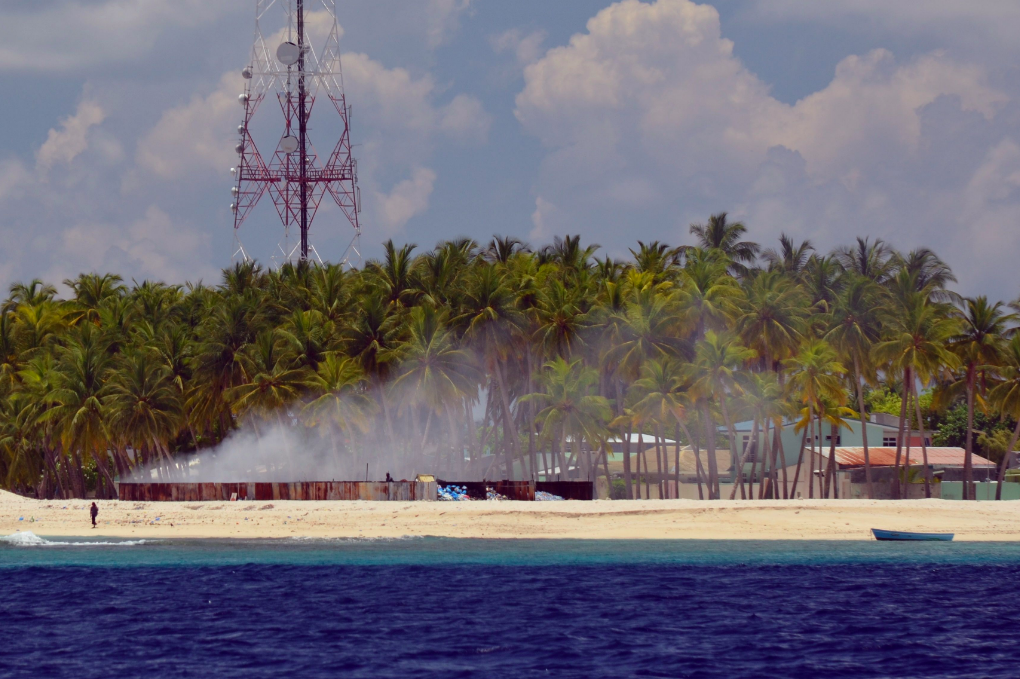
Garbage is poorly managed in many places for a range of reasons; one of the most notable is the high cost of transportation. To managing waste locally means using one of the most toxic methods possible, the low-temperature burn. EPA studies now show that the relatively low temperatures of beach or backyard fires (as compared to commercial incinerators) for burning create staggeringly toxic emissions, and not just from plastics. And yet in most of our cruising locales, this is probably the most common method of waste disposal.
Maldives – islands are nets
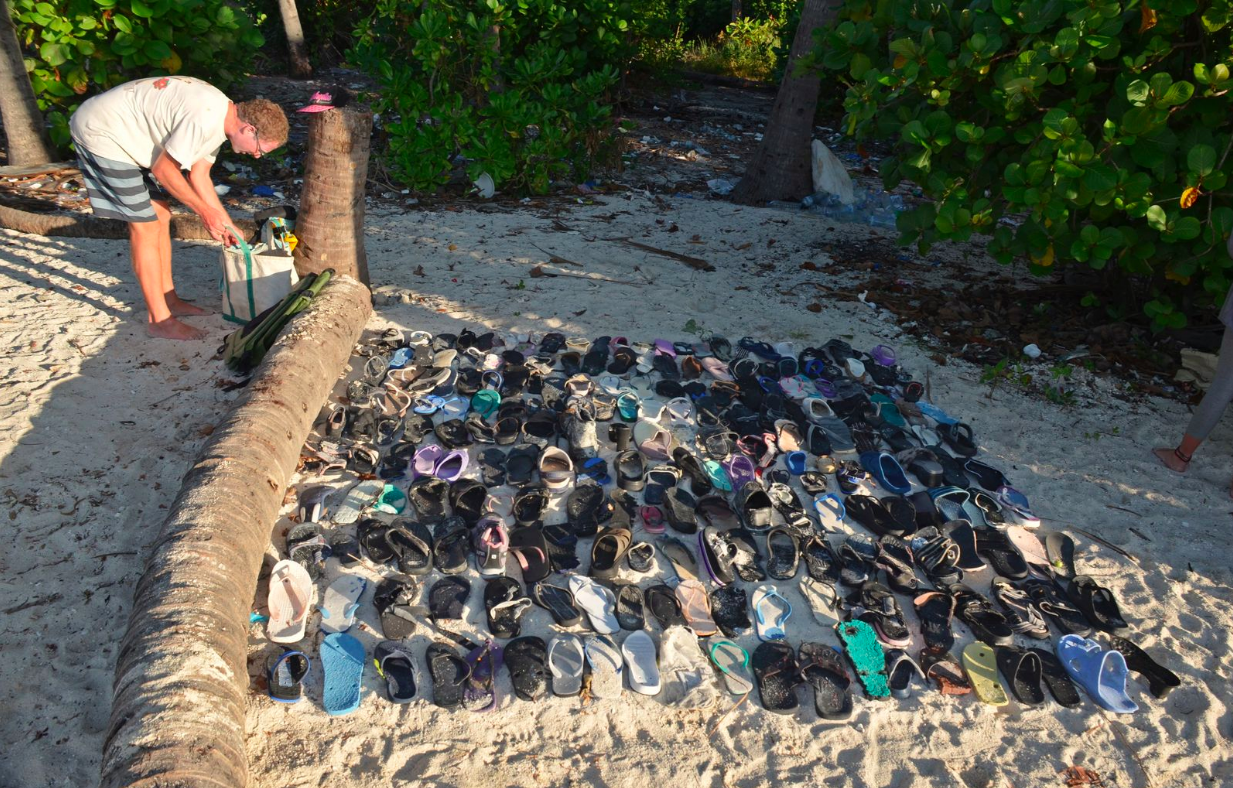
The cruisers dream is an uninhabited tropical island to call your own for a while! But that dream bubble pops when you land on the beach. Islands are nets, catching all that floats their way. The most trashed beaches we’ve been on are where nobody lives. This is because nobody is there to be offended by the sight and pick it up, or see the utility in the flotsam and take it for use. On this island, going ashore to collect firewood turned comically into going ashore to collect plastic shoes. This square of around 200 shoes represent about 20 minutes worth of collection in an area where plastic bottles outnumbered shoes.
Maldives- sea level rise
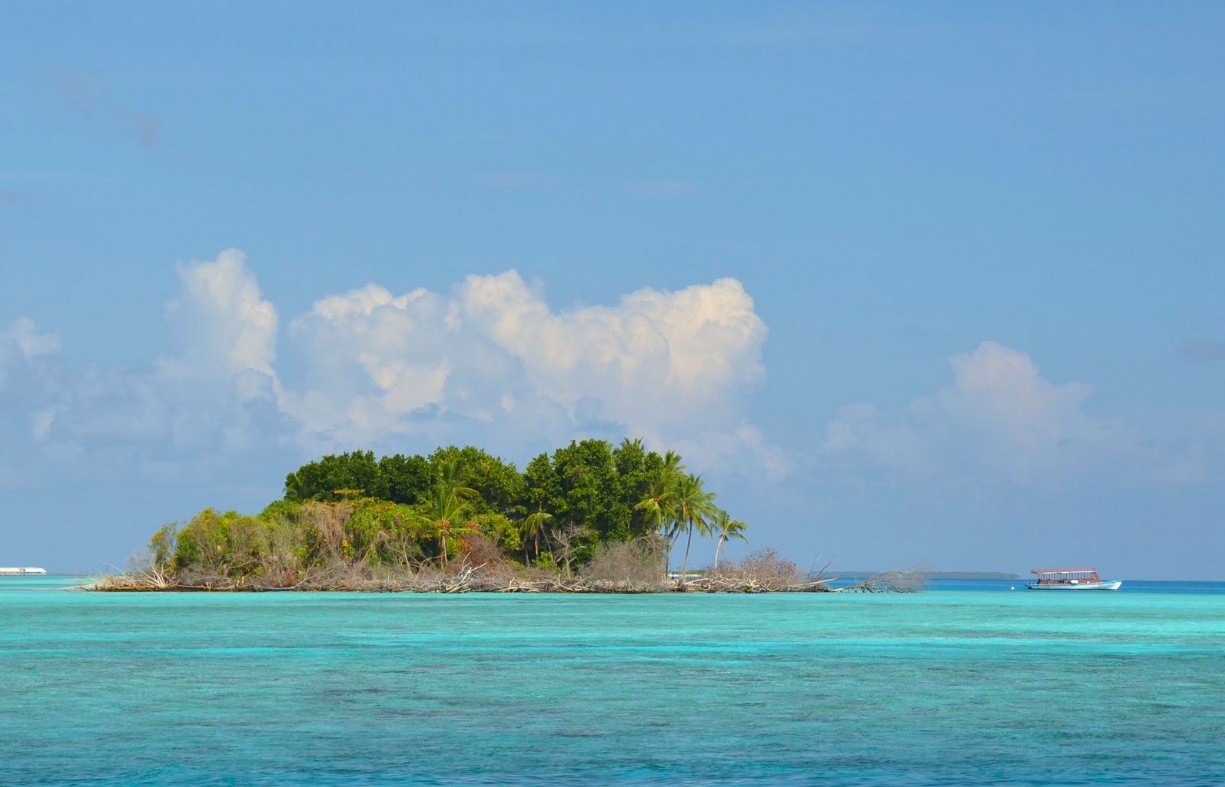
The highest natural point of land in Maldives is less than 10-feet tall. Most of the nation sits mere inches above sea level on sandy atolls. As sea levels rise, these islands are losing ground. Highly recommended by Totem’s crew, the excellent documentary “The Island President,” the story of Maldives’ former head of state and his effort to get attention for their plight at the Copenhagen climate convention.
_________________________________
Editor’s Note: It would be nice to end this article with an easy: ‘so here’s what you can do.’ But, of course it isn’t easy. Our hope is that these sights and memories lead you to motivated action. None of us can fix these problems alone. However, we can all go further to take care of our lands and waters. We’re publishing this on Earth Day with deeply-felt hope and concern.
Behan and Jamie Gifford
Behan and Jamie Gifford set sail from Bainbridge Island in 2008 and are currently aboard Totem in Mexico. Their column for 48° North has traced Lessons Learned Cruising during a circumnavigation with their three children aboard and continued adventures afloat. Follow them at www.sailingtotem.com


